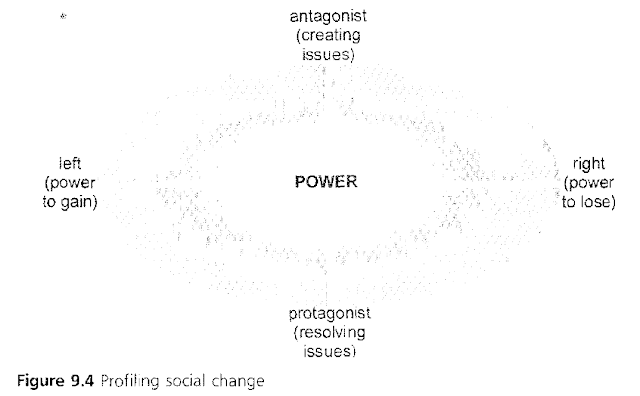We’ll leave a detailed ideological analysis of the texts we’ve been considering to people better positioned than we are to take up the challenge. There are just too many South African intertexts we don’t share for us to pronounce on what exactly is going on, especially in such a volatile site of political change. Martin (1985) suggests a model for exploring political change involving two dimensions: left/right and protagonist/antagonist. On the left are people with power to gain, and on the right are people with power to lose. Protagonists are people attempting to resolve issues, while antagonists are people attempting to create issues. On the basis of these oppositions we can establish a power profile for players and their texts around various issues, as outlined in Figure 9.4.
Blogger Comments:
[1] To be clear, Martin & Rose have not defined what they mean by 'ideology', nor located it within the architecture of SFL Theory.
[2] To be clear, ideology is entirely absent from this model. It is merely concerned with social action — not unlike the type found within, and between, social insect colonies.
[3] To be clear, this model locates left-wing, centrist and right-wing opposition parties on the left, and left-wing, centrist and right-wing parties in government on the right.
[4] To be clear, this simplistically reduces all political action to merely either creating or resolving issues.
[5] To be clear, the design of this figure is incoherent, not least because 'power' does not lie between 'people with power to lose' and 'people with power to gain', nor between 'antagonist' and 'protagonist'.

No comments:
Post a Comment